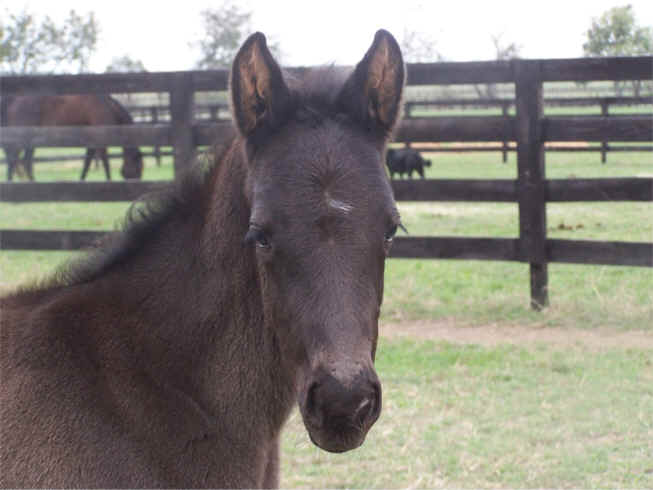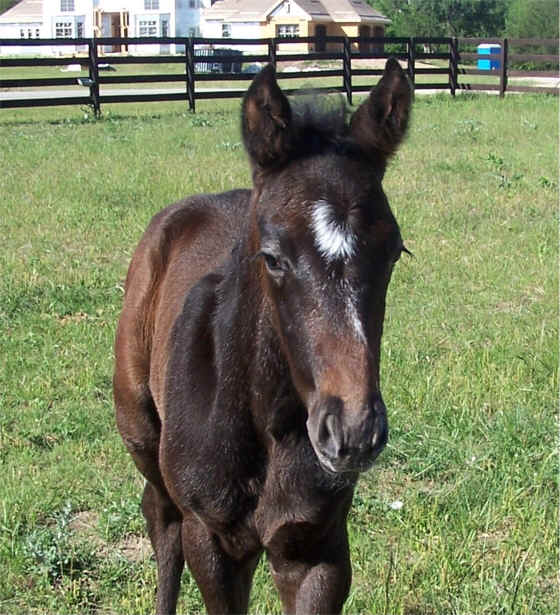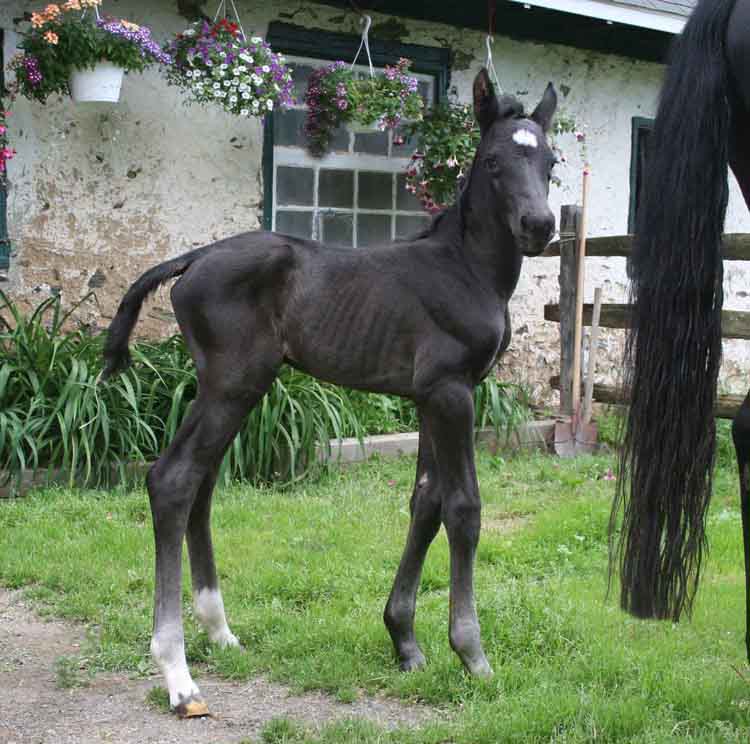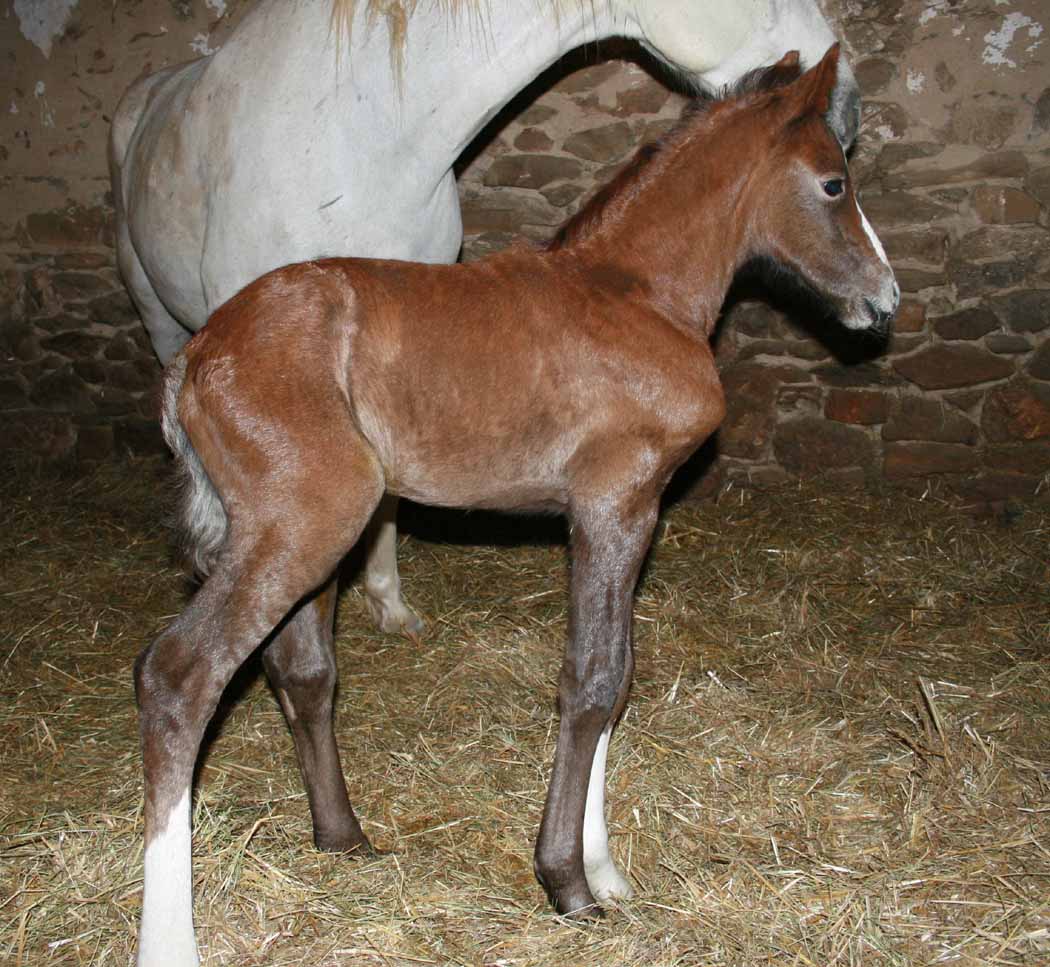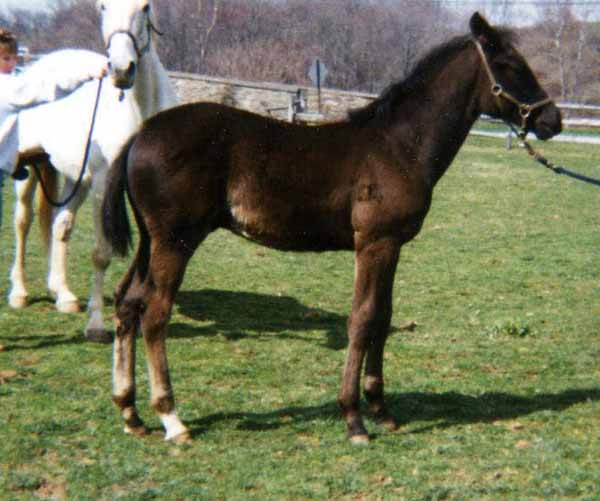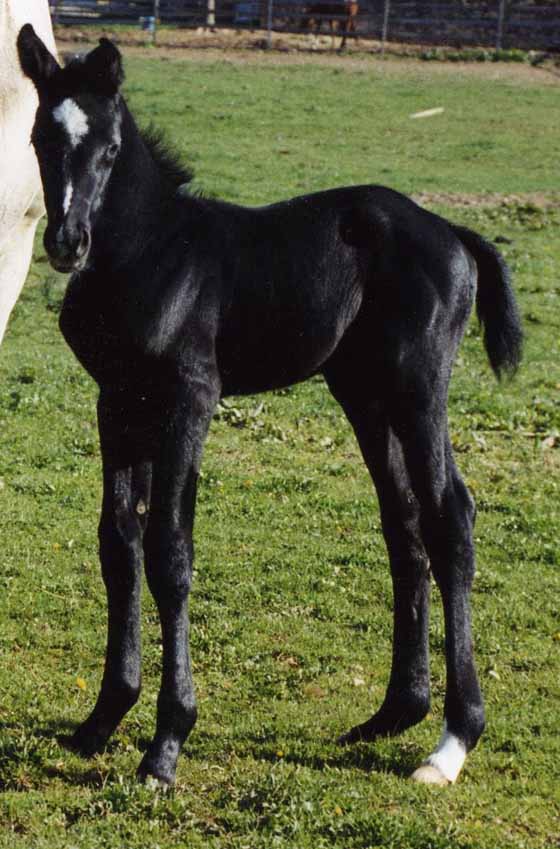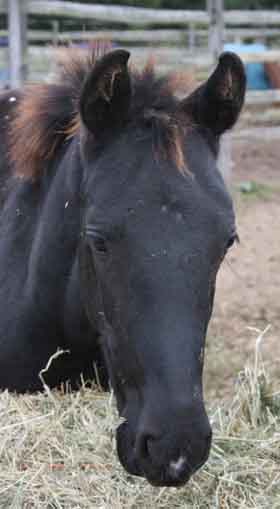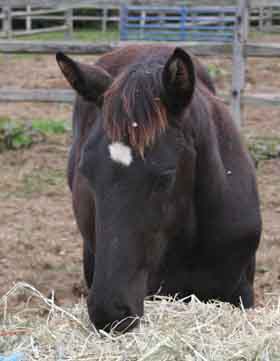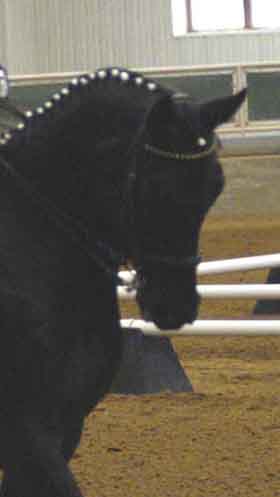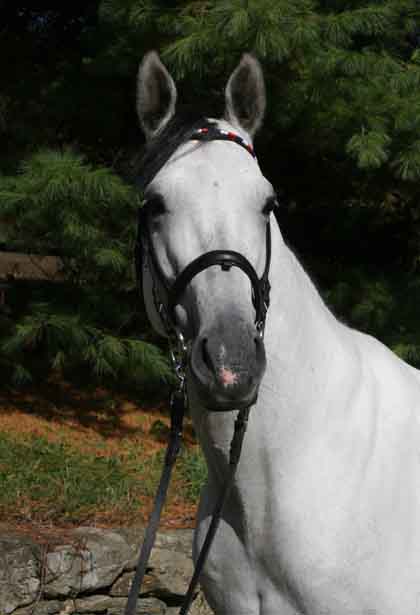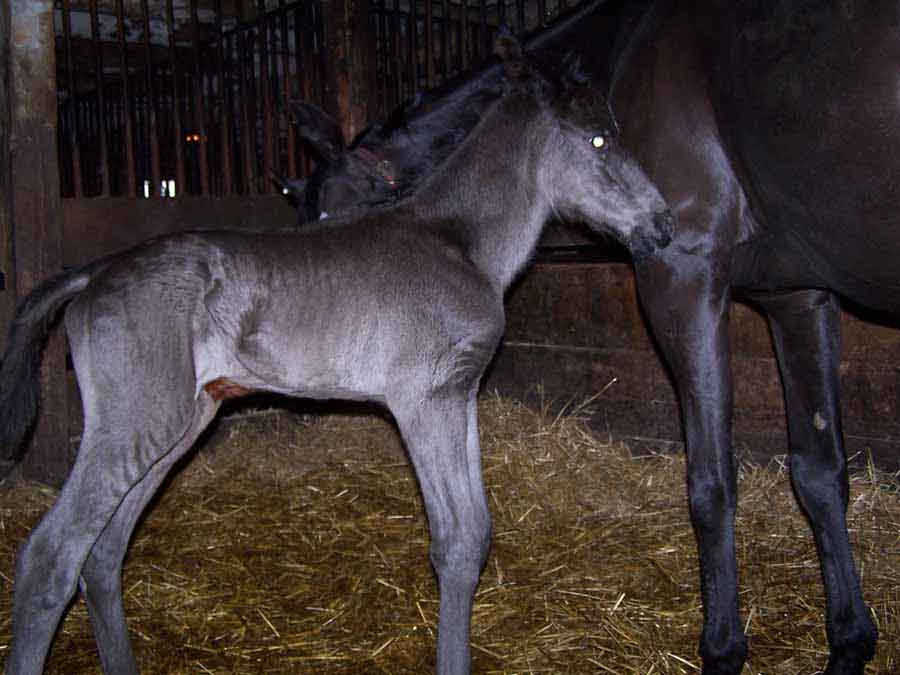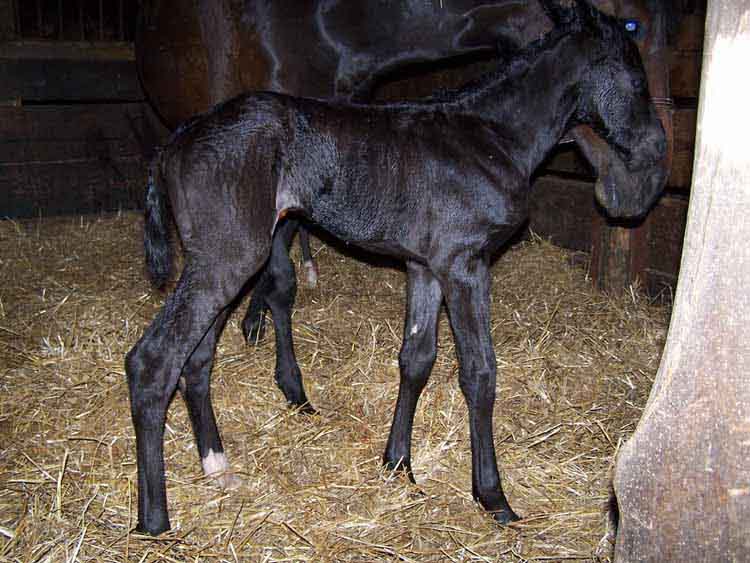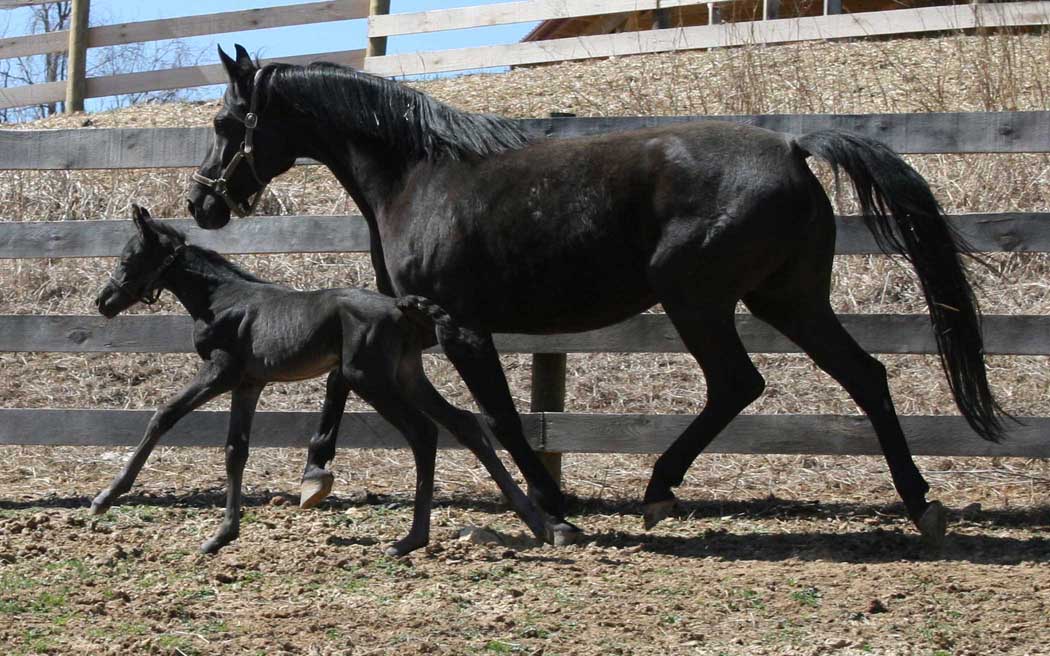Having had a grey stallion and lots of grey mares, I’m way better at telling than I used to be!
The obvious answer is that a grey foal has to have a grey parent, for starters! (But you probably already knew that!  )
)
Chestnut or palomino foals that are going to STAY colored will be born with pink/coral/salmon colored skin around their eyes. It begins to change pretty fast, so observing the color in the first day will tell you there.
If a chestnut or palomino foal is born with BLACK skin around the eyes, it will turn grey.
The bays are not always quite as obvious, however, if the legs on a bay foal are mousy/tan color, you are usually looking at a non-grey foal. If the legs are born BLACK – as in “mature horse color”, then the foal will turn grey.
Another tip for the dark colored foals – on a leg that does NOT have a white marking, if the hoof is “horn” or whitish colored, you have a non grey foal. If on a non white marked leg, the hoof is BLACK, you have a grey foal (I’m talking about at birth – not later on).
Foals born BLACK – as in “jet black” are destined to be grey (in most cases). Sometimes they will have telltale white hairs somewhere – sometimes they will not.
Foals that WILL be black are born a sooty/mousy/silvery color, in most cases.
And then there are the ones that are born really obvious, that already have grey “goggles” when they arrive! Those are guaranteed to have the best, prettiest, and most symetrical and perfect markings on any foal you have ever produced. :lol: :lol: :lol:

 )
)